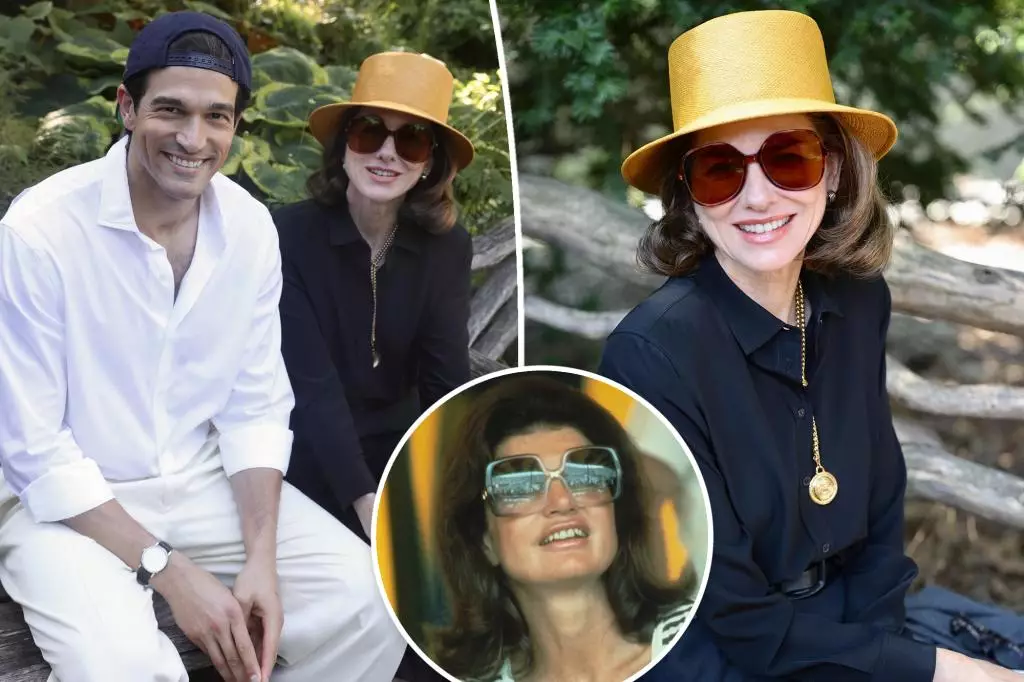Naomi Watts’s recent portrayal of Jacqueline Kennedy Onassis on Ryan Murphy’s “American Love Story” marks a daring departure from her usual cinematic persona. Instead of merely slipping into the role, Watts has committed to a comprehensive transformation that demands both respect and admiration. Her ability to shed her signature delicate blonde aesthetic in favor of Kennedy’s famously dark, polished silhouette underscores her dedication to authenticity. This bold acting choice not only enhances her credibility but also prompts viewers to reconsider her range as an actress. Watts’s transformation is more than cosmetic; it’s a deliberate act of immersing herself into the historical figure’s aura of grace, poise, and resilience.
Balancing Historical Precision with Artistic Freedom
The set photos, showing Watts in Central Park clad in Kennedy’s signature accessories—oversized sunglasses, a structured sun hat, and elegant black ensemble—highlight her commitment to capturing Kennedy’s evocative style. These visual cues are powerful, evoking the timeless sophistication associated with the former first lady. Yet, such recreations inevitably invite scrutiny, especially from fashion aficionados and historians who expect meticulous attention to detail. While some praise her commitment, others leverage the opportunity to critique the accuracy of her portrayal, emphasizing the importance of respectful storytelling. Murphy’s team seems aware of these stakes, as evidenced by their promise to refine costumes and styling, aligning with Hollywood’s standards of both authenticity and storytelling brilliance.
The Controversy: Fashion Politics and Expectations
The backlash from fashion critics and industry insiders reveals the deep-seated respect and attachment people have toward Kennedy’s image. Critics have expressed dissatisfaction with the wardrobe choices of other characters, particularly Carolyn Bessette-Kennedy’s portrayal. The fervor demonstrates how these figures are not merely fictional characters but icons woven into our cultural fabric. Stylists like Erica Cloud and Lauren Santo Domingo’s comments illustrate the complex tension between artistic interpretation and reverence for Kennedy’s sartorial legacy. The controversy underscores the power of fashion as a form of cultural memory—where even small deviations can ignite passionate debates. Murphy’s response, promising ongoing refinement and broader engagement with fashion experts, signifies an understanding that these details matter profoundly.
What This Means for Historical Drama in Popular Culture
This ambitious project exemplifies a broader trend in television: the quest for authenticity in depicting real historical figures. Audiences are increasingly craving immersive experiences, and portrayals like Watts’s Kennedy attempt to bridge the gap between entertainment and education. Yet, the challenge remains formidable. Actors and costume designers walk a tightrope—balancing creative expression with historical accuracy. Watts’s work, along with the forthcoming visual storytelling, demonstrates a clear shift towards valuing precision, recognizing that viewers have come to expect more than superficial glamour—they want to feel the soul behind these icons. As “American Love Story” prepares for its release, it will be interesting to see how these aesthetic and narrative ambitions unfold and whether they will set new standards for biographical storytelling on television.


Leave a Reply